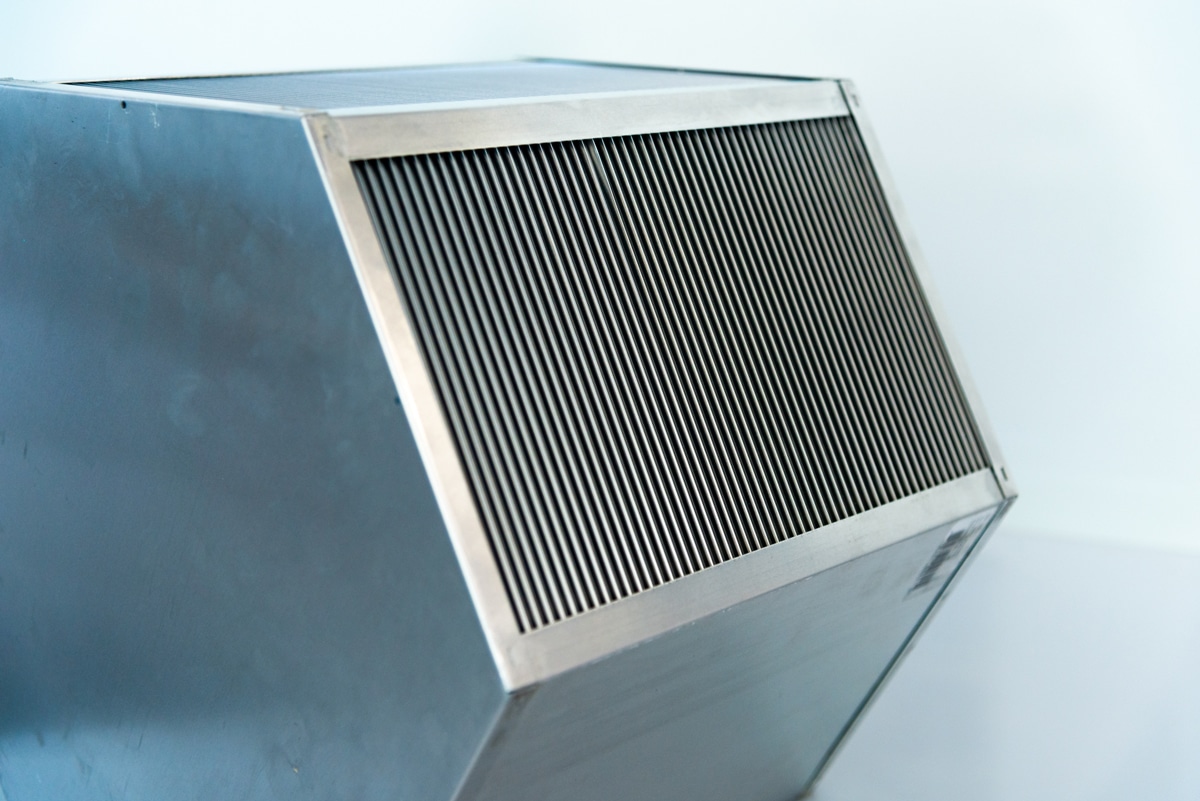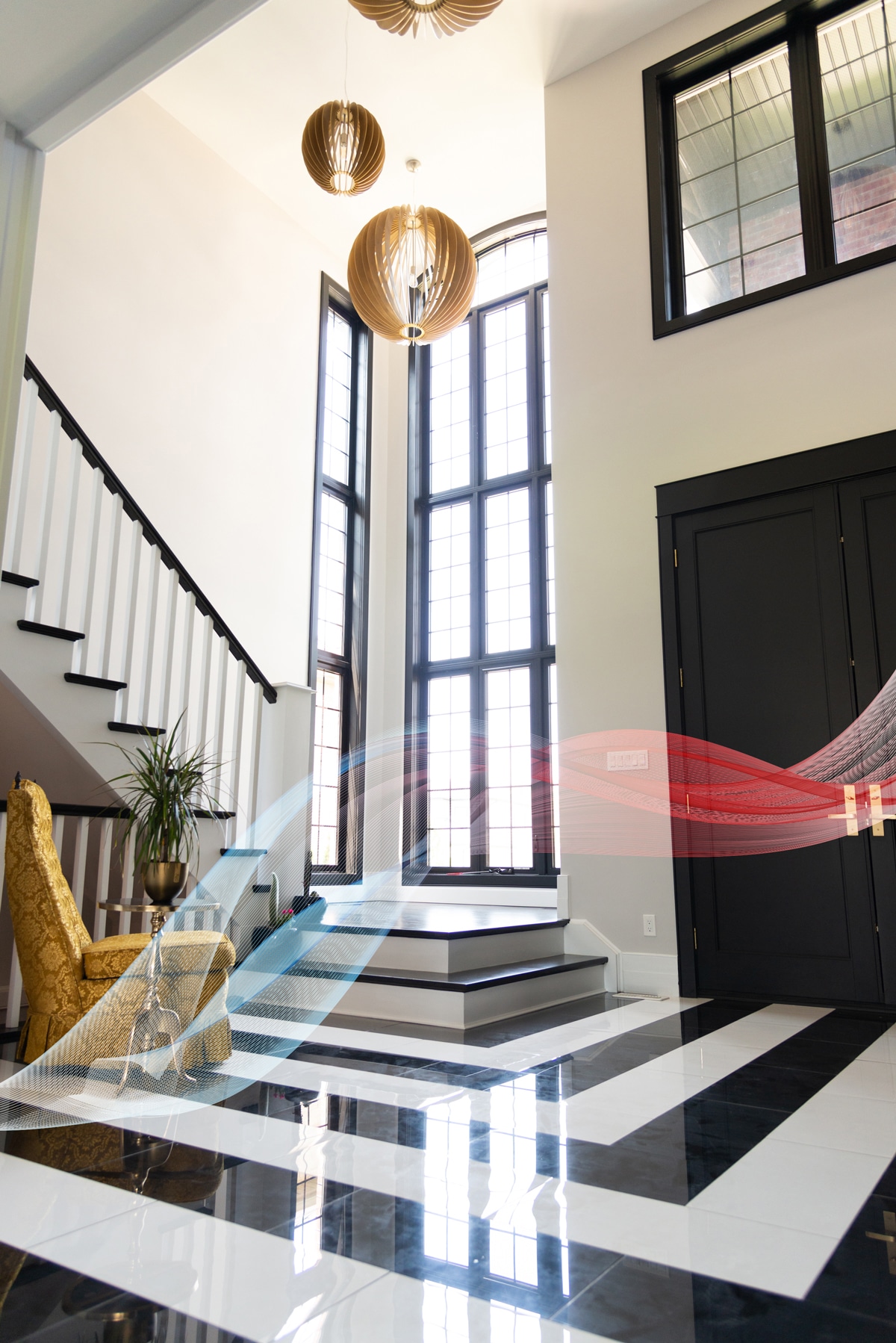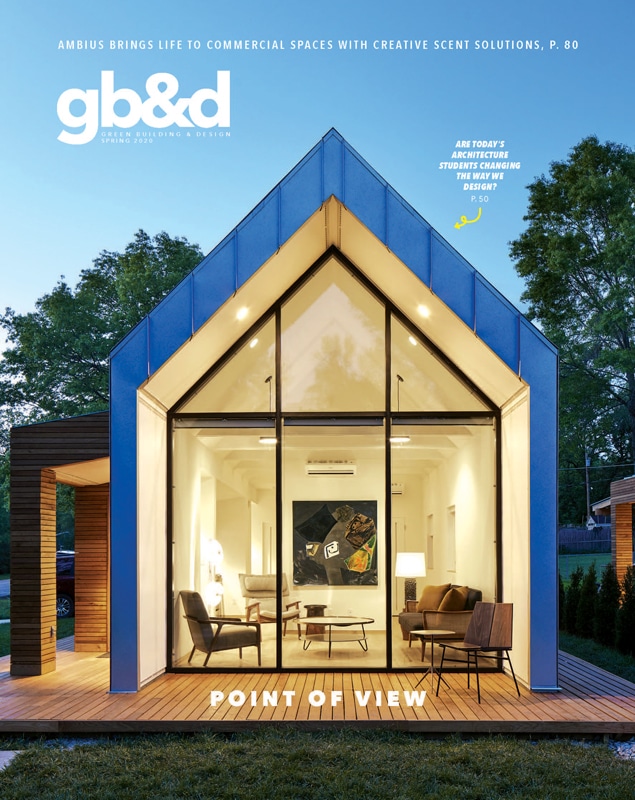
Lifebreath’s patented HRV and ERV cores are the key components that exchange heat to guarantee clean, fresh air without adding workload to the HVAC system. Photo by Camilo Gutierrez

Energy and Heat Recovery Ventilators, or ERVs and HRVs, improve indoor air quality and the longevity of a house by bringing in fresh, filtered air. Lifebreath offers ventilation solutions that allow homeowners to breathe better. “When you buy a new house—all that cabinetry, carpets, paint, et cetera—there’s some off-gassing of materials,” says Rob Kingshott, vice president of sales. That new house smell? It’s actually formaldehyde and other toxic fumes. A ventilation unit can help control and eliminate pollutants by replacing stale air in the house with fresh outside air. In this issue, Kingshott explores more of the benefits of having an ERV or HRV.
In the quest for the perfect room temperature and efficient energy use, houses are built airtight, with no room for fresh air. Many homeowners struggle with high humidity, with condensation on windows, lingering odors, and even mold. Lifebreath ventilation units exhaust stale indoor air and replace it with fresh, filtered outside air.
No one wants to wipe windows all the time or deal with nasty mold that can lead to serious health issues. An ERV or HRV eliminates all that, removing humidity and bringing the house under control to create an environment with the highest indoor air quality. The fact that we can help people with that is tremendous.

Lifebreath ERV and HRV units come in different sizes to guarantee optimal balanced airflow, depending on the application for residential and commercial projects. Photo by Camilo Gutierrez
From a health perspective, when you think about kids bringing home germs from school, what better way to get rid of those than replace stagnant air with fresh air? With an ERV or HRV, homeowners tend to have fewer colds, less allergies, and sleep better. It’s especially important considering most of us spend 90% of our time indoors.
Beyond health benefits, though, are clear and proven mechanical benefits. A Lifebreath ventilation unit reduces the load on air conditioners and the wear on furnaces, resulting in significant operating and maintenance savings. Some modular home manufacturers won’t even put a structural warranty on their buildings unless they include an ERV or HRV. That’s a pretty strong statement. From a structural point of view, a house is going to be much stronger if it doesn’t have excessive moisture in the walls, leading to rot and decay in structural components.
In addition, the cost of running an ERV or HRV is negligible. People think that because it uses power, it must be expensive, but in fact, since it’s recovering up to 92% of the heat and the motor is small, the costs are quite low. Lifebreath EC Motors, for example, use as little energy as an efficient LED lightbulb.

